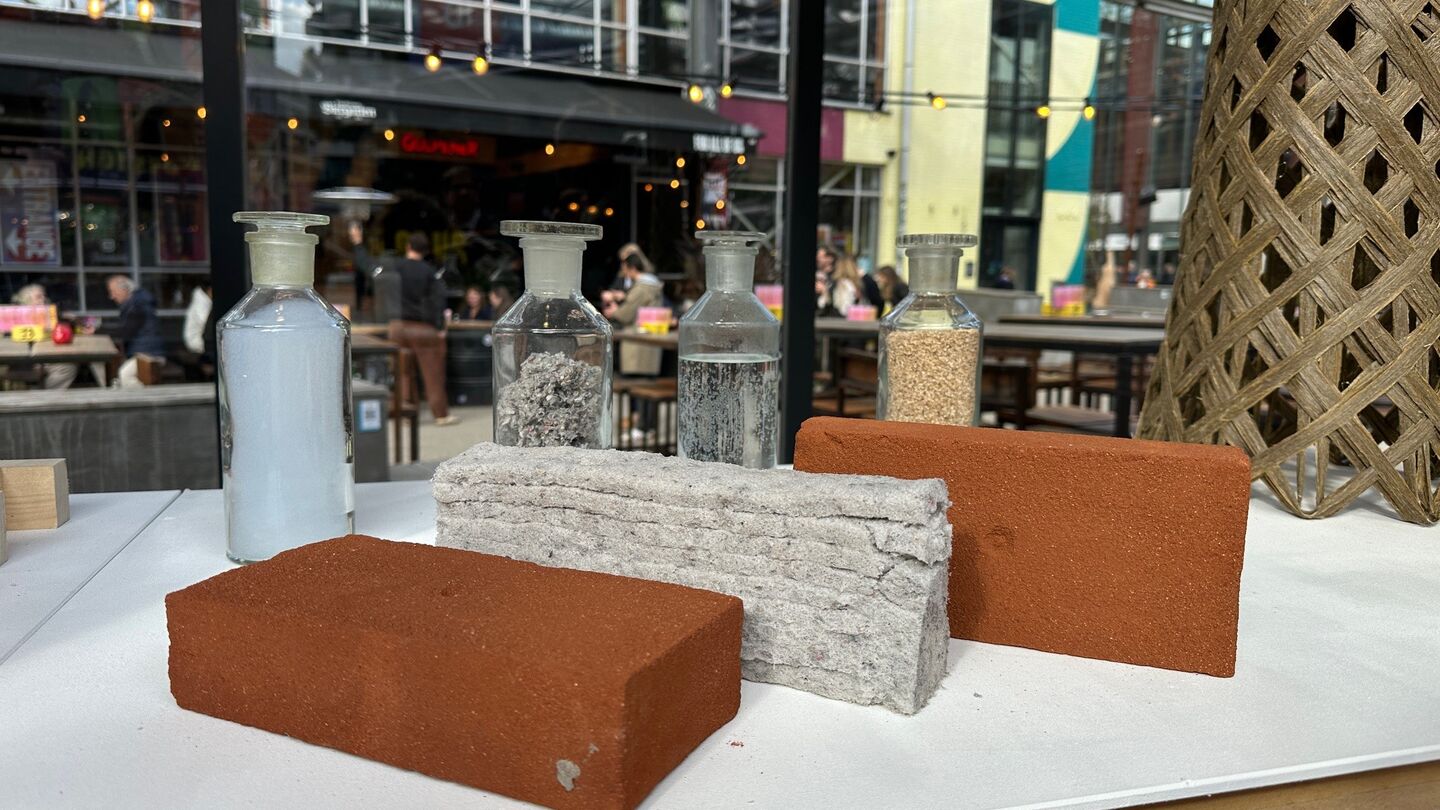
Lightest insulation material ever premieres at DDW
Aerogel – an extremely porous glass made by a TU/e researcher – fits the trend of bio-based materials and circularity at Dutch Design Week
TU/e researcher Florent Gauvin presented the world's lightest insulation material at Dutch Design Week (DDW) last Saturday. Together with his PhD student Samuel Pantaléo, they showcased aerogel as one of the bio-based materials clearly popular at the anniversary edition of DDW.
The aerogel is displayed in a bottle at the TU/e exhibition "Future by Design," which consists of two containers on Ketelhuisplein. The Built Environment container, in particular, feels smaller than in previous years, partly due to its central layout, which leaves little walking space. This doesn't stop the public from browsing the university's projects. There is massive interest in this 25th edition of DDW.
Assistant professor Florent Gauvin proudly talks about his aerogel project in the Built Environment container. It's glass, but extremely porous. "This is the lightest insulation material in the world," he beams. Yet, that low mass isn't just ideal: "It's so light now that if we want to use it in a wall, it 'disappears' without proper counterpressure. That's why we collaborated with companies to bind it and develop it further towards mass production."
And they succeeded: in front of the bottle with the small glass beads lies a gray ‘brick’. It's a prototype of an insulation block made of its aerogel, water, cellulose, and sawdust. This could be placed directly in the wall as insulation.
"It's 20 percent better than regular insulation," Gauvin explains. "That means you either need less material to achieve the same level of insulation, or you insulate better than you do now using the same amount." And perhaps even more importantly for rapid application: it's possible to 3D-print this material directly into a wall for prefab houses.
Grinding
In the container across from Industrial Design, visitors are met with a bit of giggling: there are sex toys on display, and they always attract attention. Master's student Silvia Teişanu has created a collection of sixteen "pleasure objects." She collaborated with people from the queer community, among others, to explore beyond classic sex toys that are heavily focused on the genitals.
"These toys focus on the entire body. I asked what people need in sex and what erotic pleasure means to them." It turned out there was someone who wanted to pull their sexual partner towards them but also wanted to grind on them. She designed a special arm piece for this. She will now explore the possibility of collaborations to further develop and market these out-of-the-box toys.
The versatility of the field of Industrial Design's is reflected in its container. Next to the sex toys, underwear is decomposing in a pit of sand. Maker Tess Geerts is researching whether it's possible to compost clothing within the framework of circularity.
The first woolen "plant pot" in the bin is already visibly decomposing after some months in there. However, don’t run to the garden to bury your unwanted clothes: all components must be made of natural materials, including buttons, stitching, and any fabric treatments. This is often not the case yet.
Dog food
The Klokgebouw is hosting the exhibition ‘4TU.Design United’, a collaboration between the four Dutch technical universities. Here, too, plenty of bio-based materials are on display, a clear trend that has emerged in recent years within the framework of circularity.
The smell of dog food draws the reporter to a wall on display. It turns out to be a bio-based 3D-printed wall with insulating properties. TU/e alumna Carmen Enriquez has successfully printed cellulose using heat-free technology.
During the printing process, she noticed irregularities in the material that turned out to absorb sound excellently. She started experimenting with this by printing the material further apart and closer together, as well as adjusting the printer's speed.
The smell of dog food isn't in our heads. "The cellulose is mixed with several natural powders and water. This combination creates this smell. We're currently working on reducing the odor by using a coating, but if you incorporate it into a wall, we don't expect you to smell it in the living room anyway." The effect of the current smell on a powerful dog nose might be an interesting case to investigate.
Visiting
Dutch Design Week runs until October 26. The TU/e contributions can be found at Ketelhuisplein and in the Klokgebouw. A ticket is required for the latter.

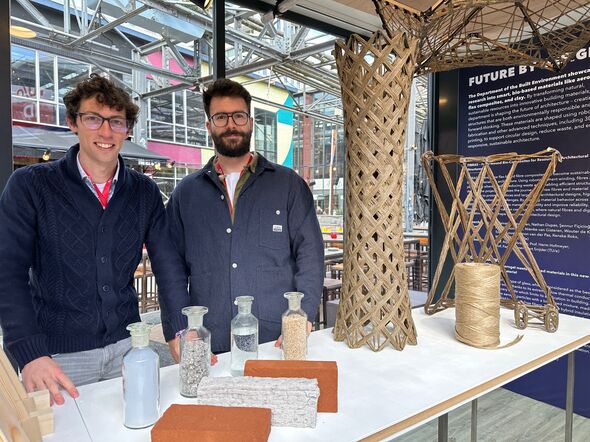
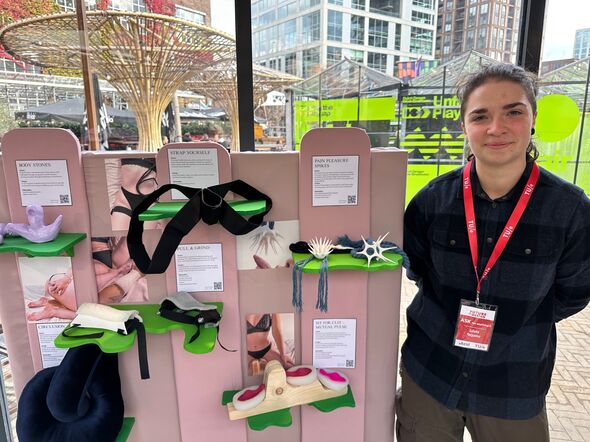
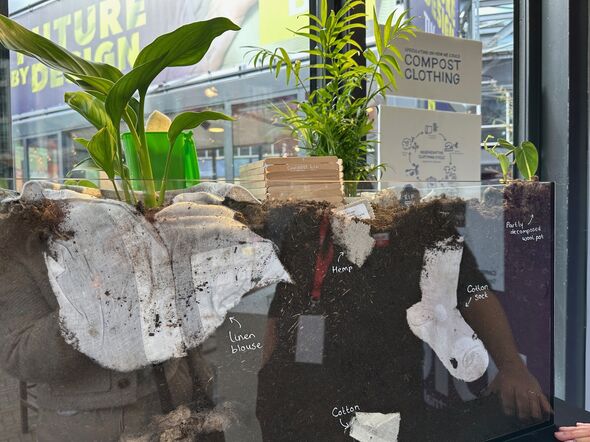
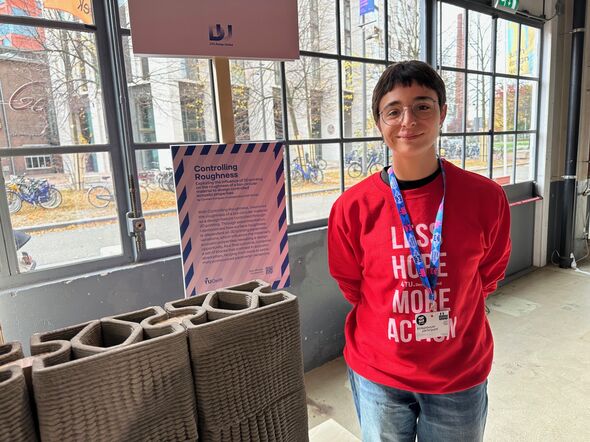
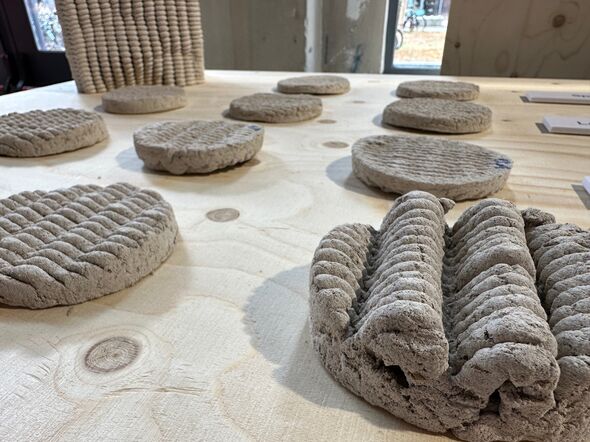
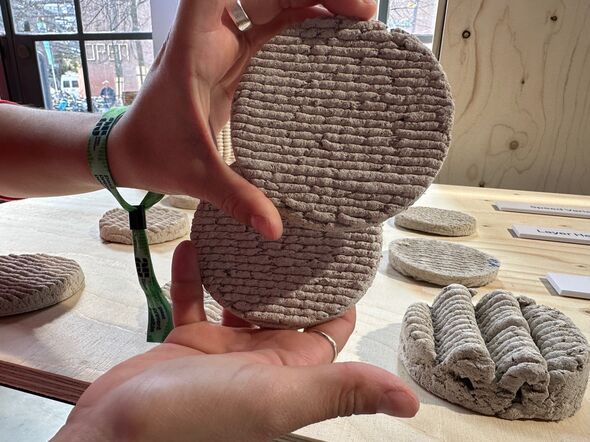
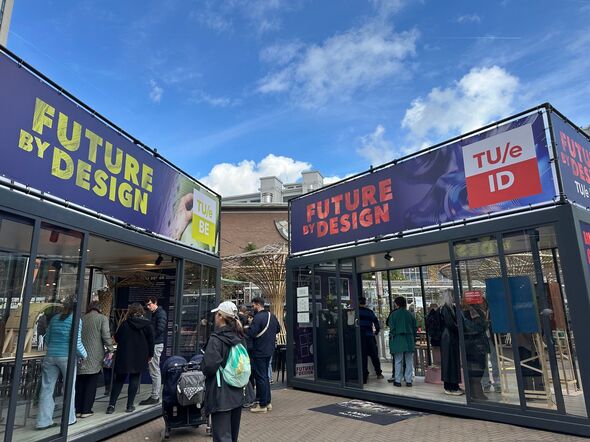
Discussion